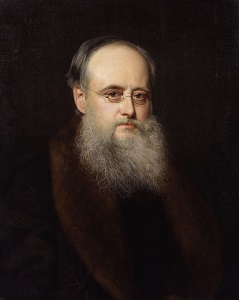De Catalaanse schrijver Juan Marsé werd geboren op 8 januari 1933 in Barcelona. Zie ook alle tags voor Juan Marsé op mijn blog.
Uit: Calligraphie des rêves (Vertaald door Jean-Marie Saint-Lu)
« Durant quelques secondes, elle a l’air de ne pas savoir où elle se trouve, elle tourne sur elle-même en tâtant l’air avec ses mains, jusqu’au moment où, s’immobilisant, tête baissée, elle pousse un cri long et rauque, comme sorti de son ventre, et qui peu à peu se transforme en soupirs pour finir en miaulements de petit chat. Elle commence à remonter la rue en trébuchant puis s’arrête, elle se tourne, cherchant un appui alentour, et aussitôt après, fermant les yeux et croisant les mains sur sa poitrine, elle se baisse en se repliant lentement sur elle-même, comme si cela lui procurait réconfort ou soulagement, puis s’allonge sur le dos, en travers des rails du tramway encore incrustés dans ce qui reste du vieux pavage. Des voisins et quelques passants occasionnels, peu nombreux et fatigués à cette heure et sur ce tronçon haut de la rue, n’en croient pas leurs yeux. Qu’est-ce qu’il lui a pris, tout à coup, à cette femme ? Allongée sur la voie de toute sa longueur, qui n’est pas grande, ses genoux massifs et brunis sur la plage de la Barceloneta pointant sous sa blouse entrouverte, les yeux fermés et les pieds bien joints dans ses pantoufles de satin à pompons pas très propres, que diable prétend-elle faire ? Faut-il supposer qu’elle veut en finir avec la vie sous les roues d’un tramway ? « Victoria ! crie une femme du trottoir. Qu’est-ce que tu fais, malheureuse ? » Elle n’obtient pas de réponse. Pas même un clignement de paupière. Très vite, un petit groupe de curieux se forme autour de la femme allongée, la plupart craignant d’être victimes d’une plaisanterie macabre. Un vieil homme tât e à plusieurs reprises la généreuse hanche avec sa canne, comme s’il ne pouvait croire qu’elle soit vivante. « Eh vous, là, qu’est-ce que c’est que cette plaisanterie ? grommelle-t-il, en la harcelant. Que cherchez-vous à faire ? » Parler d’elle, comme toujours, doit penser plus d’une voisine : que ne ferait pas cette grue pour attirer l’attention de son homme. Quadragénaire blonde aux yeux bleus pétillants , au tempérament expansif et très populaire dans le quartier, la grassouillette Mme Mir, qui avait été Dame infirmière formée dans un collège de la Phalange et exerçait maintenant comme soignante et kiné pr ofessionnelle, à en croire ses cartes de visite, avait fait et continuait à faire pas mal parler d’elle à cause de ses mains audacieuses, qui dispensaient frictions corpor elles et calmaient diverses ardeurs, et dont le talen t équivoque favorisait de fréquentes divagations amoureuses, surtout depuis que son mari, ex-maire adjoint autoritaire et bravache, avait été interné à l’hôpital San Andrés, à la fin de l’année précédente. »

Juan Marsé (Barcelona, 8 januari 1933)

